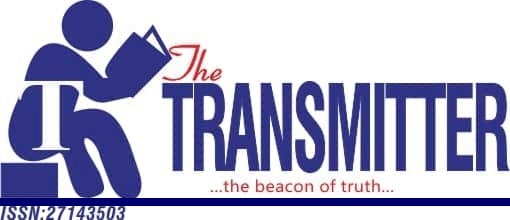Protecting the knowledge economy and safeguard Intellectual Property by Businesses

Mtem Dooyum Stephenie ACA
Finance and Tax Analyst
Abuja
As Africa continues to strive to move from a resource-led development path to one underpinned by intellectual skills, knowledge and innovation, raising awareness about the value of intellectual property and providing easy access to that system will become ever more important. While Government across the African Continent through the African Free Continent Trade Agreement (AfCTA) is now developing government-led legal frameworks that are critical in the long term, raising awareness through educational and business institutions is equally crucial if Africa’s young people are to find their rightful place in the global economy as the world graduates into a knowledge economy.
While the value of intellectual property (IP) can be difficult to quantify, protecting inventions, designs, images, symbols and logos, as well as systems, processes, business plans, and customer lists all of which constitute IP and the ‘knowledge economy’ developed by individuals or businesses is critical.
The World Intellectual Property Organization reported in 2012 that IP patent filings were at their strongest rate of growth in 20 years. More than 8.6 million patents are in force worldwide. Following the global economic crisis due to the pandemic, this news is encouraging for the economy as it demonstrates growth especially in areas such as clothing, agriculture, research and technology sectors.
IP is protected by law in Nigeria and most parts of the world, however according to the Association of Certified Fraud Examiners (ACFE) in Australia and the copy Right Commission of Nigeria, IP theft and fraud is more prevalent than ever. The cost to do businesses around the world is in the billions of dollars each year in terms of lost revenue. Consumer prices are driven up. Jobs are lost. Tax revenues are also lost. Product quality is impacted and, in some cases, public safety can be placed at risk as well.
IP can also be vulnerable to organized criminal groups looking to profit from counterfeited goods or from aggrieved employees leaking sensitive information to, for example, competitors or the media.
The seemingly endless invention of new ways to digitally store and transfer files means that sensitive business data can be copied into personal email accounts, smart phones, tablets, memory cards and cloud accounts.
A departing employee, for instance, armed with nothing more than an email account or USB flash drive can pose a significant risk to a business, particularly if they are leaving to take on a role with a competitor or set up in direct competition.
Therefore, safeguarding business IP and confidential information is crucial to ensuring a business’s continued success, so understanding how to prevent information leakage or loss to predators, or quickly respond if IP leakage occurs is fundamental to protecting a business.
Like other crimes, the process of investigating the theft of certain types of IP or other sources of confidential information involves the gathering of evidence. One unique characteristic of IP theft is the involvement of copyright and trademark owners who are required to furnish proof of their ownership of IP.
The essence is to be able to show that IP has been stolen or counterfeited. According to ACFE, of IP fraud cases reported in 2012, only 40 per cent of IP owners were able to demonstrate evidence of their ownership.
How Businesses can safeguard Intellectual Property
To assist with safeguarding intellectual property, businesses should consider the following:
- Conducting an Intellectual Property audit is a useful first step and should include reviewing human resources polices (such as background checks on employees), physical security and IP rights and safeguards relating to vendors, suppliers and other business partners will help you to determine your business security network.
- Keeping an up to date inventory of Intellectual Property and having a staff responsible for monitoring infringements and even the activities of competitors.
- Enforcing, no compete and strong non-disclosure agreements for key employees and business partners
- Having and securing business premises and access with no access protocol without permission
- Placing restrictions to download data from computer networks by creating individual user accounts for all employees. Having separate user accounts will control who can access business data by restricting access to drives and folders to specific user accounts. This will allow for management of levels of employee access and the monitoring of transfer of data by external media or email
- Restriction of access to confidential or commercially sensitive information to selected employees
- Putting in place policies on the handling of confidential information, particularly relating to tenders, contracts, panel rates and schedules
- Restricting the use of external USB devices on work issue computers
- Legally protecting products or services by filing patents, copyrights or trademarks forms .
Conclusion
As current policy debate veers towards further strengthening the existing intellectual property regime, there is a great need for stronger economic justification for taking this stance and cementing the cross-sectoral link national prosperity.
Policies that aim to alter the balance between IP and the public domain should strive to take into account where value is added or diminished on both sides. This means presenting the evidence that extending intellectual property rights will have a positive long-term effect on the economy, or, alternatively, that a weaker regime will have significant social and economic benefit that better fulfils the long-term aims of the intellectual property regime: to foster innovation and creativity for the benefit of society as a whole.



